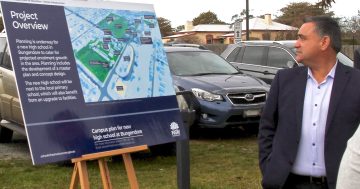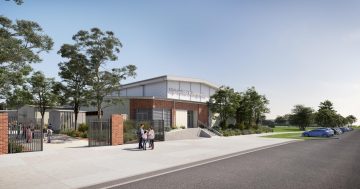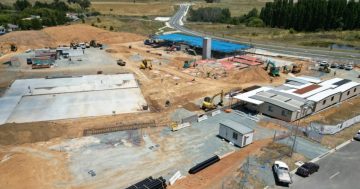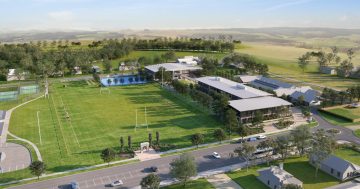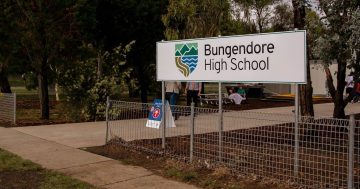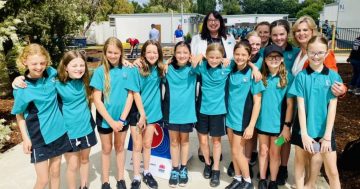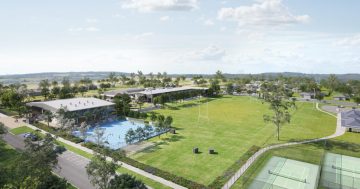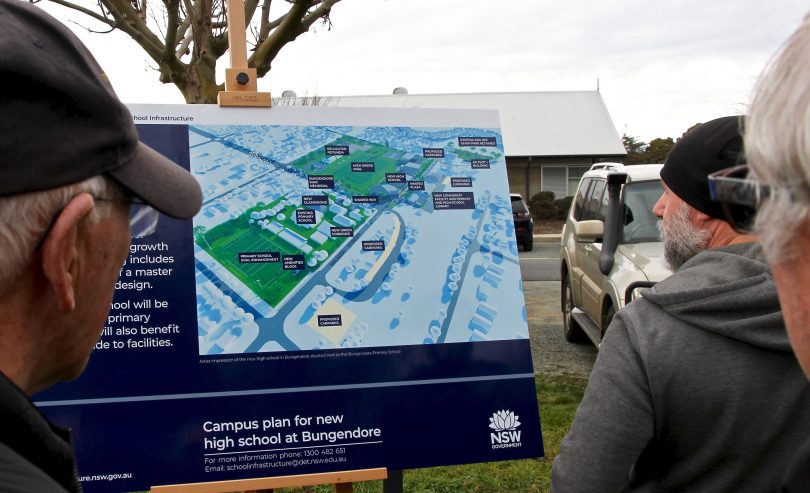
Bungendore residents survey the proposal for a high school in the town. Photo: Michael Weaver.
An audit of school projects in NSW, including proposed schools at Bungendore, Jerrabomberra and Googong, has found the majority of the projects are being delivered according to government promises and election commitments, rather than as a priority.
The audit, ‘Delivering School Infrastructure’, by NSW Auditor-General Margaret Crawford, is the first to examine the state’s delivery of school builds since School Infrastructure NSW (SINSW) was established within the Department of Education in 2017.
Ms Crawford’s report, tabled in NSW Parliament last week, found that in the 2019-2020 NSW Budget, funding for an additional 40 new and upgraded schools were announced as election commitments, however only 13 were funded in that year.
The 2020-2021 NSW Budget announced funding for an additional 14 new and upgraded schools to commence in 2020-2021. Of those, only two were funded, eight had already been announced and four were new announcements.
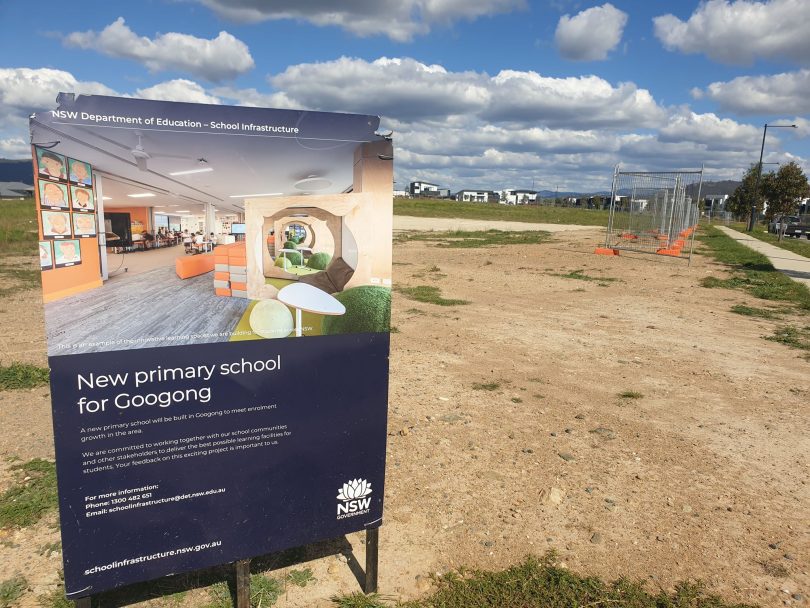
The site for the new primary school at Googong. Photo: Supplied.
Funding for Googong Primary School was announced in 2018-2019, while funding for the new high schools at Bungendore and Jerrabomberra were announced in 2019-2020.
Googong Primary School was initially scheduled to be opened by 2020, but the 33-classroom school is now slated for opening by the first term of 2022.
Bungendore High School is scheduled for opening by term one of 2023, while it is not known when Jerrabomberra is due to open.
There has also been contention within the Bungendore community regarding the site for the town’s much-needed high school.
A very early contractor involvement tender has been awarded to Hindmarsh Construction Australia for the Bungendore and Jerrabomberra schools. Hansen Yuncken has been awarded the contract for early design for the new primary school at Googong.
Ms Crawford wrote in her audit report that School Infrastructure NSW had been focused on delivering existing projects, election commitments and other government announcements.
“This has diverted attention from identifying and delivering projects that would have better met present and future student and classroom needs,” she said.
“While it has developed a long-term strategic plan that advises the government of ongoing funding requirements, it has not presented a list of priorities to meet these needs.
“Developing a longer-term pipeline of priorities would signal the areas of greatest need and allow greater scope to consider a range of options to best meet those needs.”
Member for Monaro John Barilaro said last week he is proud the NSW Government is investing in regional education and building a safer and stronger regional NSW.
“In addition to delivering this new primary school for Googong, plans are also progressing for new high schools in Jerrabomberra and Bungendore, as well as a new education campus in Jindabyne,” he said.
The audit report also found that 55 per cent of permanent school buildings in NSW are more than 40 years of age, with around 80 per cent more than 25 years old. However, a separate program to address the maintenance backlog in NSW public schools was not in the scope of this audit.
“SINSW has made progress in planning across geographic areas, but needs to better prioritise which projects move forward,” said Ms Crawford. “Given the current and projected needs for new classrooms, it is vital that SINSW provides long-term advice based on thorough statewide analysis to help prioritise projects that best meet this demand.”
The NSW Government is investing $7 billion during the next four years, continuing its program to deliver more than 200 new and upgraded schools to support communities across NSW, the largest investment in public education infrastructure in NSW.












